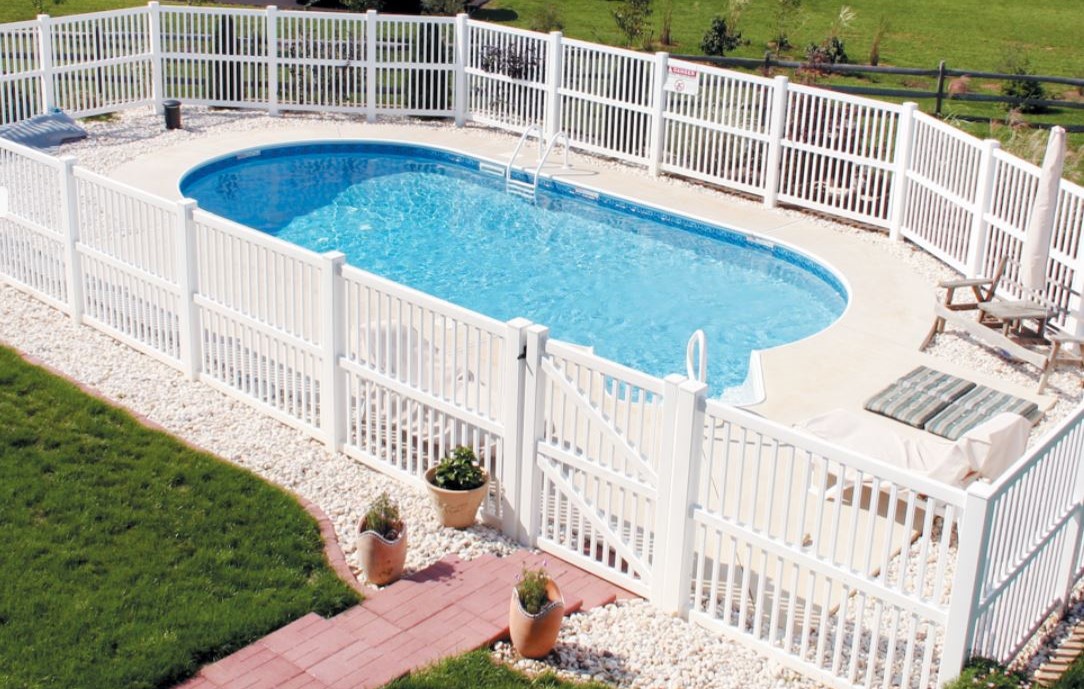
Trying to figure out exactly what kind and size of fence you need to meet residential pool code requirements can be confusing. Are there national standards? State requirements? What about local code?
While we can’t research every municipality’s pool code (you’ll need to find out the requirements in your particular town, city, borough, or township on your own), we can give you a basic overview to help simplify this issue.
First, there are no federal laws about swimming pool fencing. States make their own laws, and local municipalities can add additional regulations. Many states base their laws on the building codes that come from a respected non-profit group, the International Code Council (ICC).
The ICC and other non-profits who might create guidelines don’t have the power to enforce their codes, but governments or homeowners’ associations often take these standards into consideration when creating enforceable laws.
So what does the ICC say about pool barriers? Here is the residential code that they apply to inground and above ground pools, spas, and hot tubs.
Do not rely solely on what you read online: always check the requirements of your state or municipality before installing a fence.
- Fences should be 48” (four feet) in height at minimum. Some states or municipalities require 5-foot fences. The measurement should be done on the side facing away from the pool.
- The gap between the fence and the ground should be 2 inches or less.
- There should be no opening in the fence that would allow a 4-inch (diameter) sphere (or larger) to pass through.
- If the fence is made of horizontal and vertical members, there are specific requirements in place, depending on the distance between the tops of the horizontal members:
If the tops of horizontal members are less than 45 inches apart:
- Horizontal members must be located on the pool side of the fence.
- Spacing between vertical members or within decorative cutouts must be 1.75 inches or less (in width).
If the tops of horizontal members are more than 45 inches apart:
- Spacing between vertical members must be 4 inches or less.
- Spacing within decorative cutouts must be 1.75 inches or less.
- Any diagonal members (such as lattice fence) may not form openings greater than 1.75 inches.
- If you use chain link fencing, the mesh opening must be a 1.25-inch square or less (unless slats fastened at the top or the bottom of the fence reduce openings to 1.75 inches or less).
Code for gates include these requirements:
- Gates should open outward, away from the pool.
- Gates should be self-closing and have a self-latching lock.
- When the release mechanism on the gate latch is less than 54 inches from the bottom of the gate, it should be at least three inches below the top of the gate on the side facing the pool. This is so a child can’t reach up (or over) and release the gate latch.
- Gate and fence should have no openings greater than ½ inch within 18 inches of the gate, so that children cannot reach through a gap and release the latch.
The ultimate goal of all of this code is to prevent a child from being able to go over, under, or through a fence, or sneak in through a gate. Gaps in the fencing or openings in decorative cutouts should be small enough that they cannot provide a convenient hand-hold or foot-hold for a curious and determined child. And gates that are not fully latched (or are easy to unlatch) are the quickest, simplest way to gain entry.
Fences, even fences that meet pool code requirements, are not a substitute for adult supervision and vigilance, nor are they a guarantee of safety.
For more information about pool barriers and to see visual representations of the requirements outlined above, see this PDF from the U.S. Consumer Product Safety Commission.

